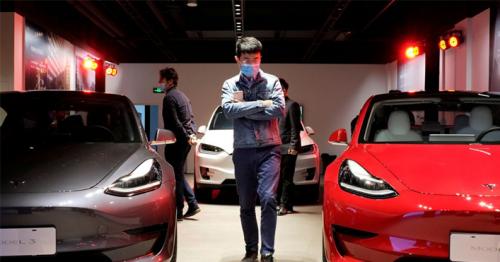Is the Tesla Roadster Flying on the Falcon Heavy’s Maiden Flight Just Space Junk?
Boosterism or "big bang" theory?
No matter how you look at it, the Falcon Heavy is a big deal.
"This is in many ways the most significant launch since the first shuttle launch in April of 1981," Dylan Taylor, an active angel investor in commercial space ventures, told Space.com. "Falcon Heavy has the potential to open up commercial space to deep space for the first time ever."
The rocket's first stage is composed of three Falcon 9 nine-engine cores, adding up to 27 Merlin engines. Those three cores are arranged in an "octaweb" structure.
All that firepower makes for a chancy rocket launch, Musk said last July at the 2017 International Space Station Research and Development Conference in Washington, D.C.
"There's a lot that could go wrong there," Musk said. "It's guaranteed to be exciting."

SpaceX's Falcon Heavy booster is ready for its maiden voyage.
Indeed, "there's a lot of risk associated with the Falcon Heavy," and there is "a real good chance that [the] vehicle does not make it to orbit," Musk said in July, noting that he wanted to make sure he "set expectations accordingly."
"I hope it makes it far enough away from the pad that it doesn't cause pad damage," Musk said. "I would consider even that a win to be honest. Yeah … a major pucker factor really is the only way to describe it."
Musk mentioned several specific reasons why the Falcon Heavy's maiden flight may not go perfectly. One is the need for all 27 orbit-class first-stage engines to light at the right time. Another is the stress that the first stage's central "core" will experience during liftoff; the loads on the rocket, from aerodynamic forces to vibration and acoustic issues, will be quite high, he said.
The Falcon Heavy will be a great vehicle, Musk said, but he added that there may be some kinks to work out, especially given how challenging the rocket's development has been.
"It just ended up being really way, way more difficult than we originally thought," Musk said. "We were pretty naive about that."
Test firing
SpaceX's Falcon Heavy successfully gunned up its 27 main engines during a test fire on Jan. 24, though it was held down tightly on the launchpad. Does that 12-second test firing signal a potential successful flight?
"Not really," said Jim Cantrell, CEO of Vector, a rocket developer in Tucson, Arizona, told Space.com. "It means that they can ignite all 27 engines at the same time. Liftoff will test the structural and flight dynamics of this new configuration and the guidance, navigation and control system that guides it. A lot can still go wrong as this is a massive undertaking."
Despite all that could go wrong, however, Burt Rutan, legendary aerospace engineer and designer of the private suborbital craft SpaceShipOne (which won the Ansari X Prize in 2004), saluted Musk and his Falcon Heavy program.
Rutan told Space.com that he thinks Musk's decision to put his car on an outward-bound trajectory was a great idea.
Elon’s maiden trek of Falcon Heavy is "somewhere along the guts and chutzpah that we did for Apollo 8 — the first time you put people on a Saturn V and shoot for the moon," Rutan said. "Has anybody made that courageous of a flight plan since?
tag: international-news , technology
Share This Post





